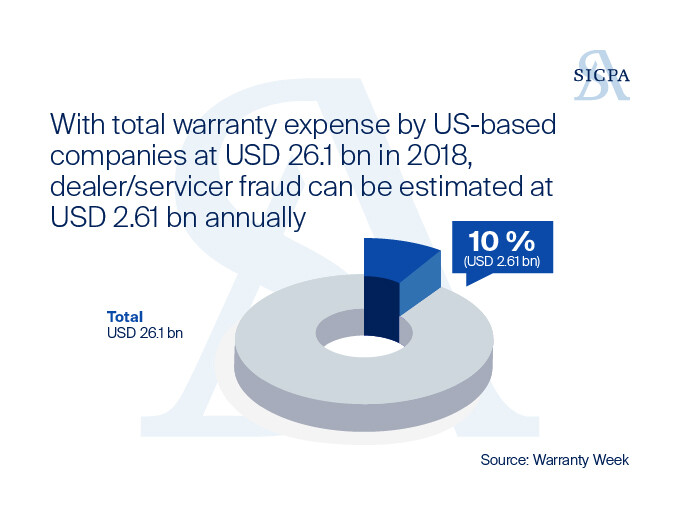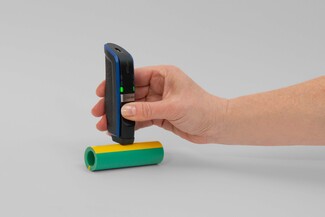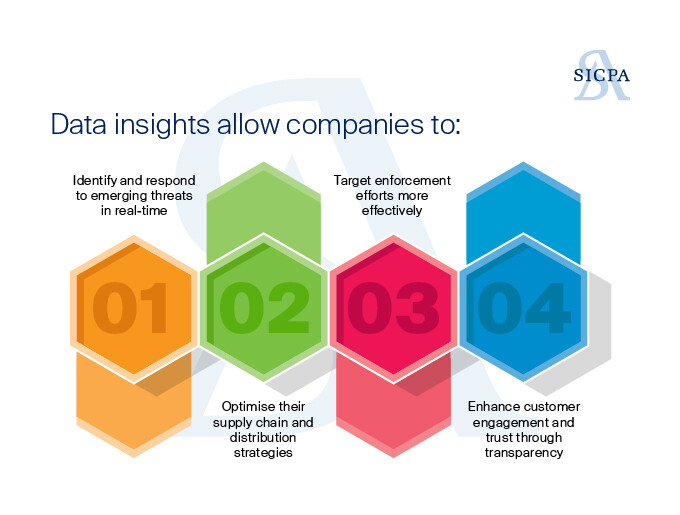
An In-Depth Look at Brand Protection Technologies
Brands and Retail Companies face an ever-increasing threat from counterfeiters and fraudsters. This not only erodes revenue but also tarnishes brand reputation, jeopardises consumer safety, and undermines trust in the marketplace. Counterfeiting can also lead to legal battles, resulting in unwanted costs and inconvenience.
At SICPA, we understand the importance of safeguarding brand integrity. As a pioneer in authenticated security solutions for brands operating in a world of illegitimate trade, we have witnessed firsthand the evolution of brand protection and related technologies. In this article, we explore the various technologies used for brand protection, thereby equipping brands with the resources to deter counterfeiting and distribution of fake products.
What is Brand Protection?
Brand protection encompasses a range of strategies and technologies designed to safeguard a company's intellectual property, products, and reputation from counterfeiting, fraud, and other forms of illicit trade. It involves authenticating genuine products, tracking their journey through the supply chain, and empowering businesses and consumers to distinguish authentic items from fakes.
Common Counterfeiting Challenges Faced by Brands
Counterfeit/Fake Products: The production and distribution of unauthorised replicas that mimic genuine products, often of inferior quality. For example, the World Health Organisation estimates that 1 in 10 medical products in low and middle-income countries is substandard or falsified.
Product Adulteration: The alteration or substitution of product components, potentially compromising quality and safety. In the food industry alone, food fraud is estimated to cost the global food industry between $10 to $15 billion annually.
- Return & Warranty Fraud: Exploitation of return policies and warranties using counterfeit products or falsified documentation.

Diversion (Parallel Market): The unauthorised sale of genuine products in markets or channels they were not intended for, often at lower prices.
- Unauthorised or Third Shift Production: Legitimate manufacturers producing extra units without authorisation, often using subpar materials.
Brand Protection Technologies
To combat these challenges, a multi-layered approach combining physical and digital technologies is crucial. At SICPA, we have developed a comprehensive suite of solutions that leverages cutting-edge innovations in material, digital, and data science domains. Let us delve into the array of advanced brand protection technologies designed to guarantee that only authentic products reach your valued customers.
Several Physical Authentication Technologies
1. Overt Security Features:
Visible to the naked eye, these features include multi-colored designs and visual effects. They provide immediate verification for consumers and inspectors. Examples include holograms, colour-shifting inks, guilloche patterns, and micro-text.
2. Semi-Overt Security Features:
These features bridge the gap between overt and covert, often requiring simple tools for verification. Heat-activated and light-activated inks fall into this category, revealing hidden patterns or text under specific conditions.
3. Covert Features:
Invisible to the naked eye, machine-readable security markers can be integrated into inks, taggants, or other vectors. They provide a higher level of security, typically verified by trained personnel using specialised equipment.
4. Forensic Technology:
Offering the highest level of security, forensic features involve molecular-based markers or specialised taggants that require laboratory analysis for verification. These are particularly useful in legal proceedings or high-stake product authentication scenarios.
5. Tamper-Evident Technology:
These features provide visible evidence of tampering attempts, ensuring product integrity. Examples include security seals, void labels, and break-away closures.
6. Digital Features:
This includes QR codes, NFC tags, and other scannable elements that bridge physical products with digital verification systems.
Digital Authentication Technologies
1. Cryptographic Signatures:
These are unique digital identifiers encrypted into product tags or packaging, verifiable through secure algorithms.
2. Journey Tracking:
Supply chain monitoring systems can record and verify each step of a product's journey from manufacture to end-consumer.
3. Digital Authentication:
This includes online platforms and mobile apps that allow real-time verification of product authenticity using unique identifiers or scanned features.
4. Customer Engagement and Feedback:
This involves building systems that enable consumers to easily verify products and report suspected counterfeits, creating a two-way flow of information.
At SICPA, we believe the future of brand protection lies in the seamless integration of physical and digital technologies. Our suite of solutions centered around custom-crafted markers unique to each client, serves as a single source of truth across the entire value chain. This approach generates actionable, real-time insights that empower brands to protect their assets and make informed decisions.
The Power of Integration

SICPA’s Product Security Solutions
By combining multiple layers of security - from overt features that consumers can easily verify to covert markers that confound counterfeiters - brands can create a robust defense against fraud.
Moreover, the integration of physical security features with digital tracking and product authentication systems creates a comprehensive ecosystem of protection. This not only safeguards products but also generates valuable data on product movement, consumer behaviour, and potential vulnerabilities in the supply chain.
The Role of Data and Analytics in Brand Protection
In today's digital age, data is king - and brand protection is no exception. Advanced analytics platforms, like SICPA's proprietary systems, can process vast amounts of data from across the supply chain, identifying patterns and anomalies that indicate counterfeiting or diversion activities.

The Human Element
While technology plays a crucial role in digital brand protection, the human element remains vital. Effective brand protection requires ongoing training for employees, partners, and even consumers. It also necessitates collaboration between brands, technology providers, law enforcement, and regulatory bodies.
Conclusion
As counterfeiters grow more sophisticated, brand protection technologies must evolve to stay ahead. The future lies in integrated, data-driven brand protection solutions that combine cutting-edge physical security features with powerful digital product authentication technology and tracking systems.
For brands, adopting new-age brand protection technologies is no longer optional - it is a necessity for survival and growth in the global marketplace. By leveraging advanced technologies and partnering with experienced solution providers like SICPA, brands can safeguard their reputation, protect their customers, and secure their revenue.
Please contact us to schedule a consultation with one of our experts and learn more about our products and services.
The Brand Protection Insider, by SICPA
Stay ahead in the fight against illegitimate trade with “The Brand Protection Insider” newsletter, by SICPA.
Receive quarterly the Product and Brand Protection newsletter - latest insights, innovative solutions, and expert advice directly to your inbox.
Join our community and build a safer, more reliable future for trade and commerce.
Sign up today!





